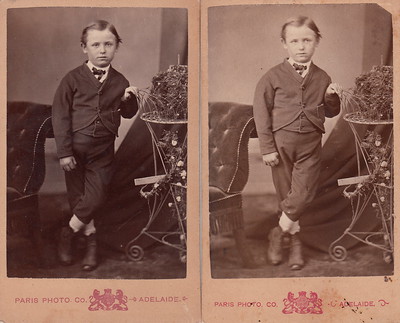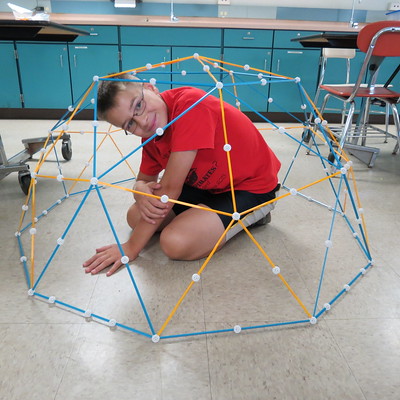Posts Tagged ‘Learning’
Same-But-Different, A Superpower That Can Save The Day
 If there’s one superpower to develop, it’s to learn how to assess a project and get a good feel for when it will launch.
If there’s one superpower to develop, it’s to learn how to assess a project and get a good feel for when it will launch.
When you want to know how long a project will take, ask this simple question: ‘What must the project team learn before the project can launch?” By starting with this single question, you will start the discussion that will lead you to an understanding of what hasn’t been done before and where the uncertainty is hiding. And if there’s one thing that can accelerate a project, it’s defining where the uncertainty is hiding. And knowing this doubly powerful, like a pure two-for-one, because if you know where uncertainty is, by definition, you know where it isn’t. Where the uncertainty isn’t, you can do what you did last time, and because you’ve done it before, you know how long it will take. No new tools, no new methods, no new analyses, no new machines, no new skillsets, no new anything. And for the remaining elements of the project, well, that’s where the uncertainty is hiding and that’s where you will focus on the learning needed to secure the launch.
But it can be difficult to understand the specific learning that must be done for a project to launch. One trick I like to use is the Same-But-Different method. It goes like this. Identify a project that launched (Project A) that’s most similar to the one that will launch next (Project B) and perform a subtraction of sorts. Declare that Project B (the one you want to launch) is the same as Project A (the one you already launched) but different in specific ways and then define those differences as clearly and tightly as possible. And where it’s different, that’s where the learning energy must be concentrated.
Same-But-Different sounds simplistic and trivial, but it isn’t. More than anything, it’s powerful. For the elements that are the same, you do what you did last time, which is freeing. And for the small subset if things that are different, you dig in!
Same-But-Different drives deep clarity and extreme focus, which result in blistering progress and blinding effectiveness.
And for some reason unknown to me, asking a team to define the novel elements of a project is at least fifty times more difficult than asking them how Project B is different than Project A. So, it feels good to the team when they can use Same-But-Different to quickly easily define what’s different and then point directly to the uncertainty. And once the team knows where the uncertainty is hiding, it’s no longer hiding.
And if there’s one thing a project team likes, it’s knowing where the uncertainty is hiding.
“The same, but different by the Paris Photographic Co. (c.1880)” by pellethepoet is marked with CC BY 2.0.
Things I Sometimes Forget
 Clean-sheet designs are fun, right up until they don’t launch.
Clean-sheet designs are fun, right up until they don’t launch.
When you feel the urge to do a clean-sheet design, go home early.
When you don’t know how to make it better, make it worse and do the opposite.
Without trying, there is no way to know if it will work.
Trying sometimes feels like dying.
But without trying, nothing changes.
Agreement is important, but only after the critical decision has been made.
When there’s 100% agreement, you waited too long to make the decision.
When it’s unclear who the customer is, ask “Whose problem will be solved?”
When the value proposition is unclear, ask ‘What problem will be solved?”
When your technology becomes mature, no one wants to believe it.
When everyone believes the technology is mature, you should have started working on the new technology four years ago.
If your projects are slow, blame your decision-making processes.
Two of the most important decisions: which projects to start and which to stop.
All the action happens at the interfaces, but that’s also where two spans of control come together and chafe.
If you want to understand your silos and why they don’t play nicely together, look at the organizational chart.
When a company starts up, the product sets the organizational structure.
Then, once a company is mature, the organizational structure constrains the product.
At the early stages of a project, there’s a lot of uncertainty.
And once the project is complete, there’s a lot of uncertainty.
“Toys Never Forget” by Alyssa L. Miller is marked with CC BY 2.0.
When You Have No Slack Time…
 When you have no slack time, you can’t start new projects.
When you have no slack time, you can’t start new projects.
When you have no slack time, you can’t run toward the projects that need your help.
When you have no slack time, you have no time to think.
When you have no slack time, you have no time to learn.
When you have no slack time, there’s no time for concern for others.
When you have no slack time, there’s no time for your best judgment.
When there is no slack time, what used to be personal becomes transactional.
When there is no slack time, any hiccup creates project slip.
When you have no slack time, the critical path will find you.
When no one has slack time, one project’s slip ripples delay into all the others.
When you have no slack time, excitement withers.
When you have no slack time, imagination dies.
When you have no slack time, engagement suffers.
When you have no slack time, burnout will find you.
When you have no slack time, work sucks.
When you have no slack time, people leave.
I have one question for you. How much slack time do you have?
“Hurry up Leonie, we are late…” by The Preiser Project is licensed under CC BY 2.0
Testing is an important part of designing.
 When you design something, you create a solution to a collection of problems. But it goes far beyond creating the solution. You also must create objective evidence that demonstrates that the solution does, in fact, solve the problems. And the reason to generate this evidence is to help the organization believe that the solution solves the problem, which is an additional requirement that comes with designing something. Without this belief, the organization won’t go out to the customer base and convince them that the solution will solve their problems. If the sales team doesn’t believe, the customers won’t believe.
When you design something, you create a solution to a collection of problems. But it goes far beyond creating the solution. You also must create objective evidence that demonstrates that the solution does, in fact, solve the problems. And the reason to generate this evidence is to help the organization believe that the solution solves the problem, which is an additional requirement that comes with designing something. Without this belief, the organization won’t go out to the customer base and convince them that the solution will solve their problems. If the sales team doesn’t believe, the customers won’t believe.
In school, we are taught to create the solution, and that’s it. Here are the drawings, here are the materials to make it, here is the process documentation to build it, and my work here is done. But that’s not enough.
Before designing the solution, you’ve got to design the tests that create objective evidence that the solution actually works, that it provides the right goodness and it solves the right problems. This is an easy thing to say, but for a number of reasons, it’s difficult to do. To start, before you can design the right tests, you’ve got to decide on the right problems and the right goodness. And if there’s disagreement and the wrong tests are defined, the design community will work in the wrong areas to generate the wrong value. Yes, there will be objective evidence, and, yes, the evidence will create a belief within the organization that problems are solved and goodness is achieved. But when the sales team takes it to the customer, the value proposition won’t resonate and it won’t sell.
Some questions to ask about testing. When you create improvements to an existing product, what is the family of tests you use to characterize the incremental goodness? And a tougher question: When you develop a new offering that provides new lines of goodness and solves new problems, how do you define the right tests? And a tougher question: When there’s disagreement about which tests are the most important, how do you converge on the right tests?
Image credit — rjacklin1975
Three Things for the New Year
 Next year will be different, but we don’t know how it will be different. All we know is that it will be different.
Next year will be different, but we don’t know how it will be different. All we know is that it will be different.
Some things will be the same and some will be different. The trouble is that we won’t know which is which until we do. We can speculate on how it will be different, but the Universe doesn’t care about our speculation. Sure, it can be helpful to think about how things may go, but as long as we hold on to the may-ness of our speculations. And we don’t know when we’ll know. We’ll know when we know, but no sooner. Even when the Operating Plan declares the hardest of hard dates, the Universe sets the learning schedule on its own terms, and it doesn’t care about our arbitrary timelines.
What to do?
Step 1. Try three new things. Choose things that are interesting and try them. Try to try them in parallel as they may interact and inform each other. Before you start, define what success looks like and what you’ll do if they’re successful and if they’re not. Defining the follow-on actions will help you keep the scope small. For things that work out, you’ll struggle to allocate resources for the next stages, so start small. And if things don’t work out, you’ll want to say that the projects consumed little resources and learned a lot. Keep things small. And if that doesn’t work, keep them smaller.
Step 2. Rinse and repeat.
I wish you a happy and safe New Year. And thanks for reading.
Mike
“three” by Travelways.com is licensed under CC BY 2.0
Effective Interactions During Difficult Times
 When times are stressful, it’s more difficult to be effective and skillful in our interactions with others. Here are some thoughts that could help.
When times are stressful, it’s more difficult to be effective and skillful in our interactions with others. Here are some thoughts that could help.
Decide how you want to respond, and then respond accordingly.
Before you respond, take a breath. Your response will be better.
If you find yourself responding before giving yourself permission, stop your response and come clean.
Better responses from you make for even better responses from others.
If you interrupt someone in the middle of their sentence so you can make your point, you made a different point.
If you find yourself preparing your response while listening to someone, that’s not listening.
If you recognize you’re not listening, now there are at least two people who know the truth.
When there are no words coming from your mouth, that doesn’t constitute listening.
The strongest deterrent to listening is talking.
If you disagree with one element of a person’s position, you can, at the same time, agree with other elements of their position. That’s how agreement works.
If you start with agreement, even the smallest bit, disagreement softens.
Before you can disagree, it’s important to listen and understand. And it’s the same with agreement.
It’s easy to agree if that’s what you want to accomplish. And it’s the same for disagreement.
If you want to move toward agreement, start with understanding.
If you want to demonstrate understanding, start with listening.
If you want to demonstrate good listening, start with kindness.
Here are three mantras I find helpful:
Talk less to listen more.
Before you respond, take a breath.
Kindness before agreement.
“Rock-em” by REL Waldman is licensed under CC BY-SA 2.0
How To Be Novel
 By definition, the approach that made you successful will become less successful over time and, eventually, will run out of gas. This fundamental is not about you or your approach, rather it’s about the nature of competition and evolution. There’s an energy that causes everything to change, grow and improve and your success attracts that energy. The environment changes, the people change, the law changes and companies come into existence that solve problems in better and more efficient ways. Left unchanged, every successful business endeavor (even yours) has a half-life.
By definition, the approach that made you successful will become less successful over time and, eventually, will run out of gas. This fundamental is not about you or your approach, rather it’s about the nature of competition and evolution. There’s an energy that causes everything to change, grow and improve and your success attracts that energy. The environment changes, the people change, the law changes and companies come into existence that solve problems in better and more efficient ways. Left unchanged, every successful business endeavor (even yours) has a half-life.
If you want to extend the life of your business endeavor, you’ve got to be novel.
By definition, if you want to grow, you’ve got to raise your game. You’ve got to do something different. You can’t change everything, because that’s inefficient and takes too long. So, you’ve got to figure out what you can reuse and what you’ve got to reinvent.
If you want to grow, you’ve got to be novel.
Being novel is necessary, but expensive. And risky. And scary. And that’s why you want to add just a pinch of novelty and reuse the rest. And that’s why you want to try new things in the smallest way possible. And that’s why you want to try things in a time-limited way. And that’s why you want to define what success looks like before you test your novelty.
Some questions and answers about being novel:
Is it easy to be novel? No. It’s scary as hell and takes great emotional strength.
Can anyone be novel? Yes. But you need a good reason or you’ll do what you did last time.
How can I tell if I’m being novel? If you’re not scared, you’re not being novel. If you know how it will turn out, you’re not being novel. If everyone agrees with you, you’re not being novel.
How do I know if I’m being novel in the right way? You cannot. Because it’s novel, it hasn’t been done before, and because it hasn’t been done before there’s no way to predict how it will go.
So, you’re saying I can’t predict the outcome of being novel? Yes.
If I can’t predict the outcome of being novel, why should I even try it? Because if you don’t, your business will go away.
Okay. That last one got my attention. So, how do I go about being novel? It depends.
That’s not a satisfying answer. Can you do better than that? Well, we could meet and talk for an hour. We’d start with understanding your situation as it is, how this current situation came to be, and talk through the constraints you see. Then, we’d talk about why you think things must change. I’d then go away for a couple of days and think about things. We’d then get back together and I’d share my perspective on how I see your situation. Because I’m not a subject matter expert in your field, I would not give you answers, but, rather, I’d share my perspective that you could use to inform your choice on how to be novel.
“Giraffe trying to catch a twig with her tongue” by Tambako the Jaguar is licensed under CC BY-ND 2.0
How to Decide if Your Problem is Worth Solving
 How to decide if a problem is worth solving?
How to decide if a problem is worth solving?
If it’s a new problem, try to solve it.
If it’s a problem that’s already been solved, it can’t be a new problem. Let someone else re-solve it.
If a new problem is big, solve it in a small way. If that doesn’t work, try to solve it in a smaller way.
If there’s a consensus that the problem is worth solving, don’t bother. Nothing great comes from consensus.
If the Status Quo tells you not to solve it, you’ve hit paydirt!
If when you tell people about solving the problem they laugh, you’re onto something.
If solving the problem threatens the experts, double down.
If solving the problem obsoletes your most valuable product, solve it before your competition does.
If solving the problem blows up your value proposition, light the match.
If solving the problem replaces your product with a service, that’s a recipe for recurring revenue.
If solving the problem frees up a factory, well, now you have a free factory to make other things.
If solving the problem makes others look bad, that’s why they’re trying to block you from solving it.
If you want to know if you’re doing it right, make a list of the new problems you’ve tried to solve.
If your list is short, make it longer.
“CERDEC Math and Science Summer Camp, 2013” by CCDC_C5ISR is licensed under CC BY 2.0
If you “don’t know,” you’re doing it right.
 If you know how to do it, it’s because you’ve done it before. You may feel comfortable with your knowledge, but you shouldn’t. You should feel deeply uncomfortable with your comfort. You’re not trying hard enough, and your learning rate is zero.
If you know how to do it, it’s because you’ve done it before. You may feel comfortable with your knowledge, but you shouldn’t. You should feel deeply uncomfortable with your comfort. You’re not trying hard enough, and your learning rate is zero.
Seek out “don’t know.”
If you don’t know how to do it, acknowledge you don’t know, and then go figure it out. Be afraid, but go figure it out. You’ll make mistakes, but without mistakes, there can be no learning.
No mistakes, no learning. That’s a rule.
If you’re getting pressure to do what you did last time because you’re good at it, well, you’re your own worst enemy. There may be good profits from a repeat performance, but there is no personal growth.
Why not find someone with “don’t know” mind and teach them?
Find someone worthy of your time and attention and teach them how. The company gets the profits, an important person gets a new skill, and you get the satisfaction of helping someone grow.
No learning, no growth. That’s a rule.
No teaching, no learning. That’s a rule, too.
If you know what to do, it’s because you have a static mindset. The world has changed, but you haven’t. You’re walking an old cowpath. It’s time to try something new.
Seek out “don’t know” mind.
If you don’t know what to do, it’s because you recognize that the old way won’t cut it. You know have a forcing function to follow. Follow your fear.
No fear, no growth. That’s a rule.
Embrace the “don’t know” mind. It will help you find and follow your fear. And don’t shun your fear because it’s a leading indicator of novelty, learning, and growth.
“O OUTRO LADO DO MEDO É A LIBERDADE (The Other Side of the Fear is the Freedom)” by jonycunha is licensed under CC BY-SA 2.0
Some Problems With Problems
 If you don’t know what the problem is, that’s your first problem.
If you don’t know what the problem is, that’s your first problem.
A problem can’t be a problem unless there’s a solution. If there’s no possible solution, don’t try to solve it, because it’s not a problem.
If there’s no problem, you have a big problem.
If you’re trying to solve a problem, but the solution is outside your sphere of influence, you’re taking on someone else’s problem.
If someone tries to give you a gift but you don’t accept it, it’s still theirs. It’s like that with problems.
If you want someone to do the right thing, create a problem for them that, when solved, the right thing gets done.
Problems are good motivators and bad caretakers.
A problem is between two things, e.g., a hammer and your thumb. Your job is to figure out the right two things.
When someone tries to give you their problem, keep your hands in your pockets.
A problem can be solved before it happens, while it happens, or after it happened. Each time domain has different solutions, different costs, and different consequences. Your job is to choose the most appropriate time domain.
If you have three problems, solve one at a time until you’re done.
Solving someone else’s problem is a worst practice.
If you solve the wrong problem, you consume all the resources needed to solve the right problem without any of the benefits of solving it.
Ready, fire, aim is no way to solve problems.
When it comes to problems, defining IS solving.
If you learn one element of problem-solving, learn to see when someone is trying to give you their problem.
“My first solved Rubik’s cube” by Nina Stawski is licensed under CC BY 2.0
What Good Coaches Do
 Good coaches listen to you. They don’t judge, they just listen.
Good coaches listen to you. They don’t judge, they just listen.
Good coaches continually study the game. They do it in private, but they study.
Good coaches tell you that you can do better, and that, too, they do in private.
Good coaches pick you up off the floor. They know that getting knocked over is part of the game.
Good coaches never scream at you, but they will cry with you.
Good coaches never stop being your coach. Never.
Good coaches learn from you, and the best ones tell you when that happens.
Good coaches don’t compromise. Ever.
Good coaches have played the game and have made mistakes. That’s why they’re good coaches.
Good coaches do what’s in your best interest, not theirs.
Good coaches are sometimes wrong, and the best ones tell you when that happens.
Good coaches don’t care what other people think of them, but they care deeply about you.
Good coaches are prepared to be misunderstood, though it’s not their preference.
Good coaches let you bump your head or smash your knee, but, otherwise, they keep you safe.
Good coaches earn your trust.
Good coaches always believe you and perfectly comfortable disagreeing with you at the same time.
Good coaches know it’s always your choice, and they know that’s how deep learning happens.
Good coaches stick with you, unless you don’t do your part.
Good coaches don’t want credit. They want you to grow.
Good coaches don’t have a script. They create a custom training plan based on your needs.
Good coaches simplify things when it’s time, unless it’s time to make things complicated.
Good coaches aren’t always positive, but they are always truthful.
Good coaches are generous with their time.
Good coaches make a difference.
 Mike Shipulski
Mike Shipulski